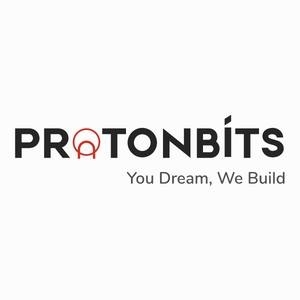Top Ruby on Rails Development Features: Every Developer Should Know
 ProtonBits Software Private Limited
ProtonBits Software Private LimitedRuby on Rails, often simply referred to as Rails, has been a cornerstone in web development for over a decade.
Known for its simplicity, convention over configuration, and rapid development capabilities, Rails remains a popular choice for startups to large enterprises.
Whether you're a seasoned Rails developer or just starting, understanding its key features is essential for building robust web applications efficiently.
In this blog post, we'll explore some of the top Ruby on Rails development features that every developer should know.
Let’s Begin!!
1. Convention over Configuration
One of the core principles of Ruby on Rails is "Convention over Configuration." This means that Rails makes assumptions based on conventions, reducing the need for explicit configuration.
By following naming conventions and placing files in predefined directories, developers can focus more on writing application logic rather than configuring the framework.
2. ActiveRecord
ActiveRecord is Rails' object-relational mapping (ORM) library, which provides an interface to interact with databases using Ruby objects.
It simplifies database operations by abstracting away SQL queries and providing methods for CRUD (Create, Read, Update, Delete) operations.
With ActiveRecord, developers can define associations between models, perform validations, and execute complex queries effortlessly.
3. MVC Architecture
Rails follows the Model-View-Controller (MVC) architecture, separating the application into three interconnected components:
Model: Represents the data and business logic of the application.
View: Handles the presentation layer, rendering data to the user.
Controller: Acts as an intermediary between the model and view, processing user requests and generating appropriate responses.
This architectural pattern promotes code organization, maintainability, and scalability.
4. Gem Ecosystem
RubyGems, the package manager for Ruby, boasts a vast ecosystem of libraries and tools called "gems." Rails developers leverage gems to extend the framework's functionality, integrate with third-party services, and streamline software development tasks.
Popular gems like Devise for authentication, RSpec for testing, and Sidekiq for background processing enhance the productivity and capabilities of Rails applications.
5. Routing
Rails' routing system maps incoming HTTP requests to controller actions, defining how URLs correspond to application logic.
The routes.rb file contains route definitions using a concise DSL (Domain-Specific Language).
Developers can specify RESTful routes, custom routes, and route constraints to design clean and maintainable URL structures.
6. Scaffolding
Rails scaffolding generates boilerplate code for CRUD operations, enabling developers to kickstart new projects quickly.
By running a single command, Rails creates controllers, models, views, and database migrations based on a specified resource.
While scaffolding is useful for rapid prototyping, it's essential to customize generated code according to application requirements for production-ready solutions.
7. ActiveSupport
ActiveSupport is a utility library bundled with Rails, providing extensions and enhancements to the Ruby language. It offers numerous helper methods for string manipulation, date and time formatting, caching, and more.
ActiveSupport's features simplify common programming tasks and improve developer productivity.
One of the popular software that is built on the Ruby on Rails development framework is DonorKite - donor database software for nonprofits, churches, and charities. All the above-mentioned features are embraced by this donation software to add multiple features such as donation management, donation tracking, and online donation to streamline donation management and enhance the fundraising efforts of organizations.
Conclusion
Ruby on Rails continues to be a go-to framework for building web applications due to its elegant syntax, robust features, and vibrant community.
By leveraging its conventions, ActiveRecord ORM, MVC architecture, and extensive ecosystem of gems, developers can create scalable, maintainable, and feature-rich applications with ease.
Whether you're a beginner or an experienced developer, mastering these key features will undoubtedly enhance your proficiency in Rails development.
Keep exploring, learning, and building amazing things with Ruby on Rails!
Subscribe to my newsletter
Read articles from ProtonBits Software Private Limited directly inside your inbox. Subscribe to the newsletter, and don't miss out.
Written by

ProtonBits Software Private Limited
ProtonBits Software Private Limited
ProtonBits is a leading fintech web app development company. Expertise in fintech website development. Transforming ideas into powerful digital solutions.